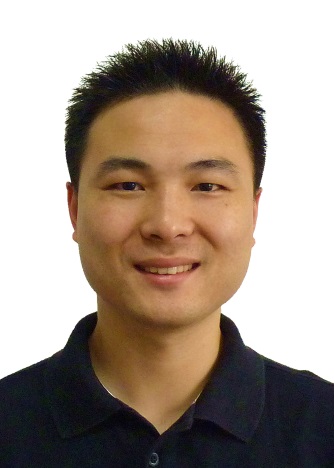Zhang Duanwu
 Duanwu Zhang, Ph.D.
Duanwu Zhang, Ph.D.
2009.09 Ph.D. in Biochemistry and Molecular Biology, Xiamen University; Joint Ph.D. in Immunology, The Scripps Research Institute, CA, USA
2005.06 B.S. in Biological Sciences, Xiamen University, Xiamen, China
2019.09‒present Principal investigator, Institutes of Biomedical Sciences, Fudan University, Shanghai, China
2015.11‒2019.08 Instructor, Center for Genetics of Host Defense, UT Southwestern Medical Center, Dallas, USA
2012.09‒2015.10 Post-doc, Dr. Bruce Beutler’s Laboratory, UT Southwestern Medical Center, Dallas, USA
2009.10‒2012.07 Post-doc, Dr. Jiahuai Han’s Laboratory, State Key Laboratory of Cellular Stress Biology, Xiamen University, Xiamen, China
Institutes of Biomedical Sciences, Fudan University, Shanghai, 200032
Tel: +86-15859292820
E-mail: duanwu@fudan.edu.cn
Lab homepage: https://ibs.fudan.edu.cn/aa/fc/c21164a240380/page.htm
Member of the Specialized Committee on Infection Immunity, Shanghai Society for Immunology; Member of the Chinese Society for Immunology; Editorial Board Member of Frontiers in Immunology and Frontiers in Pharmacology.
Immune Signaling; Cell Death; RNA Splicing
Our laboratory is mainly interested in studying immune cell development and activation, anti-viral/anti-tumor immunity, as well as programmed cell death related to immune system. Recently, we’re also interested in the research on RNA splicing regulation that frequently associates with immune signaling and cancer.
Zhang D, Shao J, Lin J, Zhang N, Lu BJ, Lin SC, Dong MQ, Han J (2009). RIP3, an energy metabolism regulator that switches TNF-induced cell death from apoptosis to necrosis. Science, 325(5938):332-336. (Recommended by F1000Prime)
Zhang D, Lin J, Han J (2010). Receptor-interacting protein (RIP) kinase family. Cellular & Molecular Immunology, 7(4):243-249.
Han J, Zhong CQ, Zhang D (2011). Programmed necrosis, backup to and competitor with apoptosis in the immune system. Nature Immunology, 12(12):1143-1149.
Zhang D#, Zheng M#, Zhao J, Li YY, Huang Z, Li Z, Han J (2011). Multiple death pathways in TNF-treated fibroblasts: RIP3- and RIP1-dependent and independent routes. Cell Research, 21(2):368- 371.
Lin J, Li H, Yang M, Ren J, Huang Z, Han F, Huang J, Ma J, Zhang D, Zhang Z, Wu J, Huang D, Qiao M, Jin G, Wu Q, Huang Y, Du J, Han J (2013). A role of RIP3-mediated macrophage necrosis in atherosclerosis development. Cell Reports, 3(1):200-210.
Wu T, Li Y, Huang D, Han F, Zhang YY, Zhang D*, Han J* (2014). Regulator of G-protein signaling 19 (RGS19) and its partner Gα-inhibiting activity polypeptide 3 (GNAI3) are required for zVAD- induced autophagy and cell death in L929 cells. PLOS One, 9(4):e94634. (*correspondence)
Wang T, Zhan X, Bu CH, Lyon S, Pratt D, Hildebrand S, Choi JH, Zhang Z, Zeng M, Wang KW, Turer E, Chen Z, Zhang D, Yue T...Beutler B (2015). Real-time resolution of point mutations that cause phenovariance in mice. Proc Natl Acad Sci USA, 112(5):E440-E449.
Zhang D, Tomisato W, Su L, Sun L, Choi JH, Zhang Z, Wang KW, Zhan X, Choi M, Li X, Tang M, Castro-Perez JM, Hildebrand S, Murray AR, Moresco EMY, Beutler B (2017). Skin-specific regulation of SREBP processing and lipid biosynthesis by glycerol kinase 5. Proc Natl Acad Sci USA, 114(26):E5197- E5206.
Choi JH, Wang KW, Zhang D, Zhan X, Wang T, Bu CH, Behrendt CL, Zeng M, Wang Y, Misawa T, Li X, Tang M, Zhan X, Scott L, Hildebrand S, Murray AR, Moresco EM, Hooper LV, Beutler B (2017). IgD class switching is initiated by microbiota and limited to mucosa-associated lymphoid tissue in mice. Proc Natl Acad Sci USA, 114(7):E1196-E1204.
Zhang D, Yue T, Choi JH, Nair-Gill E, Zhong X, Wang KW, Zhan X, Li X, Choi M, Tang M, Quan J, Hildebrand S, Moresco EMY, Beutler B (2019). Syndromic immune disorder caused by a viable hypomorphic allele of spliceosome component Snrnp40. Nature Immunology, 20(10):1322-1334.
Wang KW, Zhan X, McAlpine W, Zhang Z, Choi JH, Shi H, Misawa T, Yue T, Zhang D, Wang Y, Ludwig S, Russell J, Tang M, Li X, Murray AR, Moresco EMY, Turer EE, Beutler B (2019). Enhanced susceptibility to chemically induced colitis caused by excessive endosomal TLR signaling in LRBA- deficient mice. Proc Natl Acad Sci USA, 116(23):11380-11389.
Choi JH, Zhong X, McAlpine W, Liao TC, Zhang D, Fang B, Russell J, Ludwig S, Nair-Gill E, Zhang Z, Wang KW, Misawa T, Zhan X, Choi M, Wang T, Li X, Tang M, Sun Q, Yu L, Murray AR, Moresco EMY, Beutler B (2019). LMBR1L regulates lymphopoiesis through Wnt/β-catenin signaling. Science, 364(6440):eaau0812.
Yue T, Zhan X, Zhang D, Jain R, Wang KW, Choi JH, Misawa T, Su L, Quan J, Hildebrand S, Xu D, Li X, Turer E, Sun L, Moresco EMY, Beutler B (2021). SLFN2 protection of tRNAs from stress-induced cleavage is essential for T cell-mediated immunity. Science, 372(6543):eaba4220.
Wei G, Zhang H, Zhao H, Wang J, Wu N, Li L, Wu J, Zhang D* (2021). Emerging immune checkpoints in the tumor microenvironment: Implications for cancer immunotherapy. Cancer Letters, 511:68-76. (*correspondence)
Yang H, Beutler B*, Zhang D* (2021). Emerging roles of spliceosome in cancer and immunity. Protein & Cell, Jul 1. doi: 10.1007/s13238-021-00856-5. (*correspondence)
Xu D, Lyon S, Bu CH, Hildebrand S, Choi JH, Zhong X, Liu A, Turer E, Zhang Z, Russell J, Ludwig S, Mahrt E, Nair-Gill E, Shi H, Wang Y, Zhang D, Yue T...Beutler B (2021). Thousands of induced germline mutations affecting immune cells identified by automated meiotic mapping coupled with machine learning. Proc Natl Acad Sci USA, 118(28):e2106786118.
Zhong X, Choi JH, Hildebrand S, Ludwig S, Wang J, Nair-Gill E, Liao TC, Moresco JJ, Liu A, Quan J, Sun Q, Zhang D, Zhan X, Choi M, Li X, Wang J, Gallagher T, Moresco EMY, Beutler B (2022).RNPS1 inhibits excessive tumor necrosis factor/tumor necrosis factor receptor signaling to support hematopoiesis in mice. Proc Natl Acad Sci USA, 119(18):e2200128119.